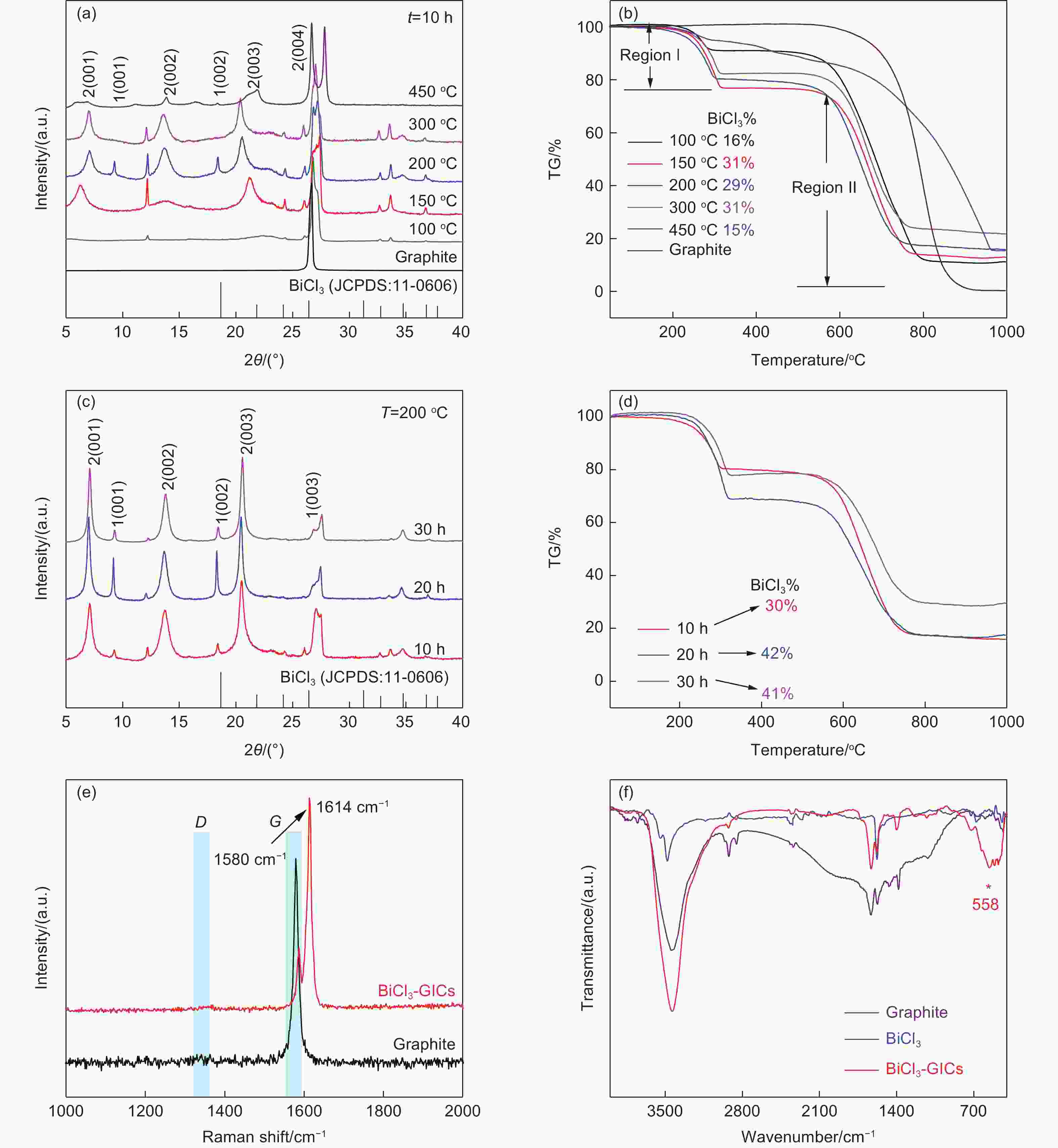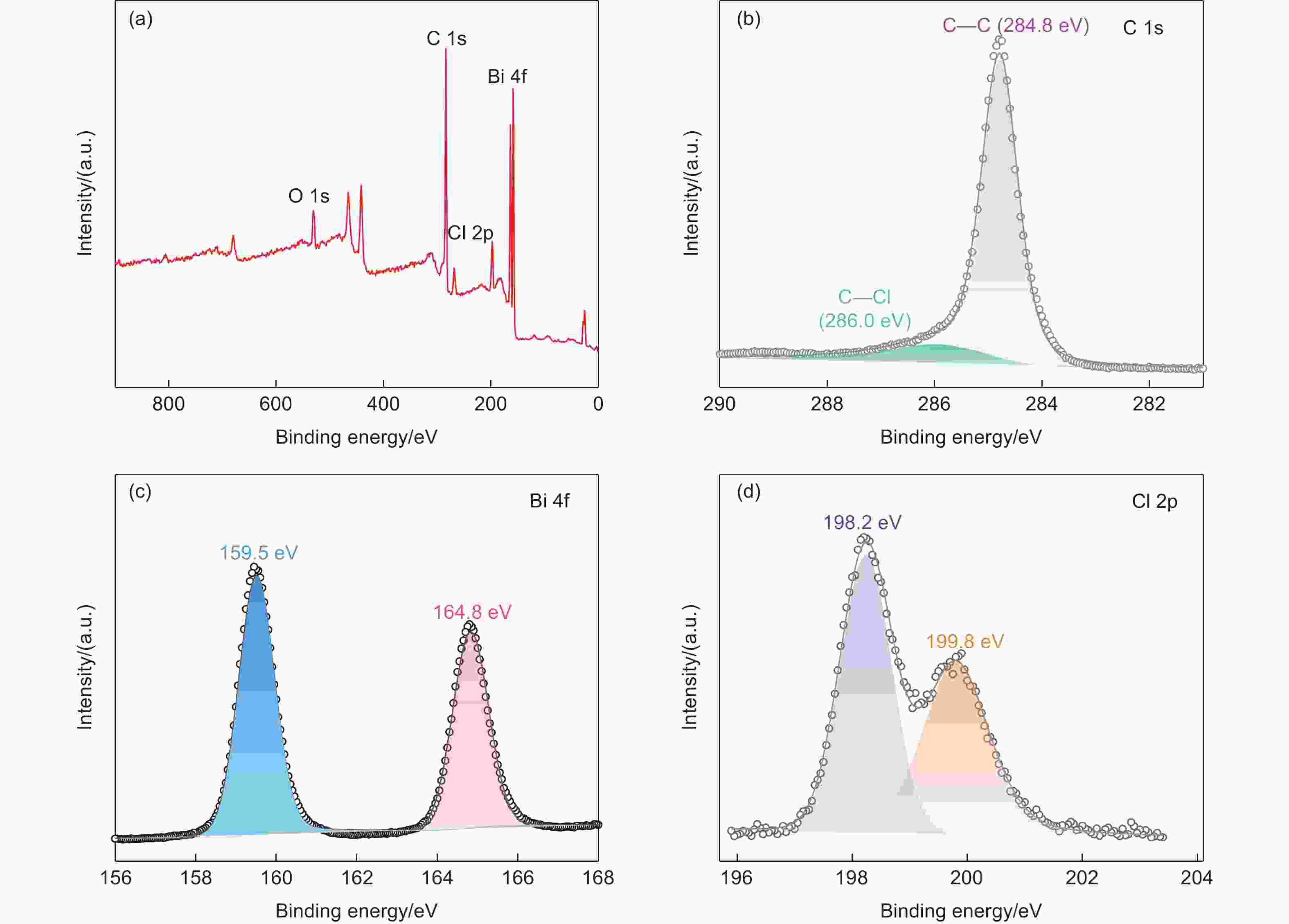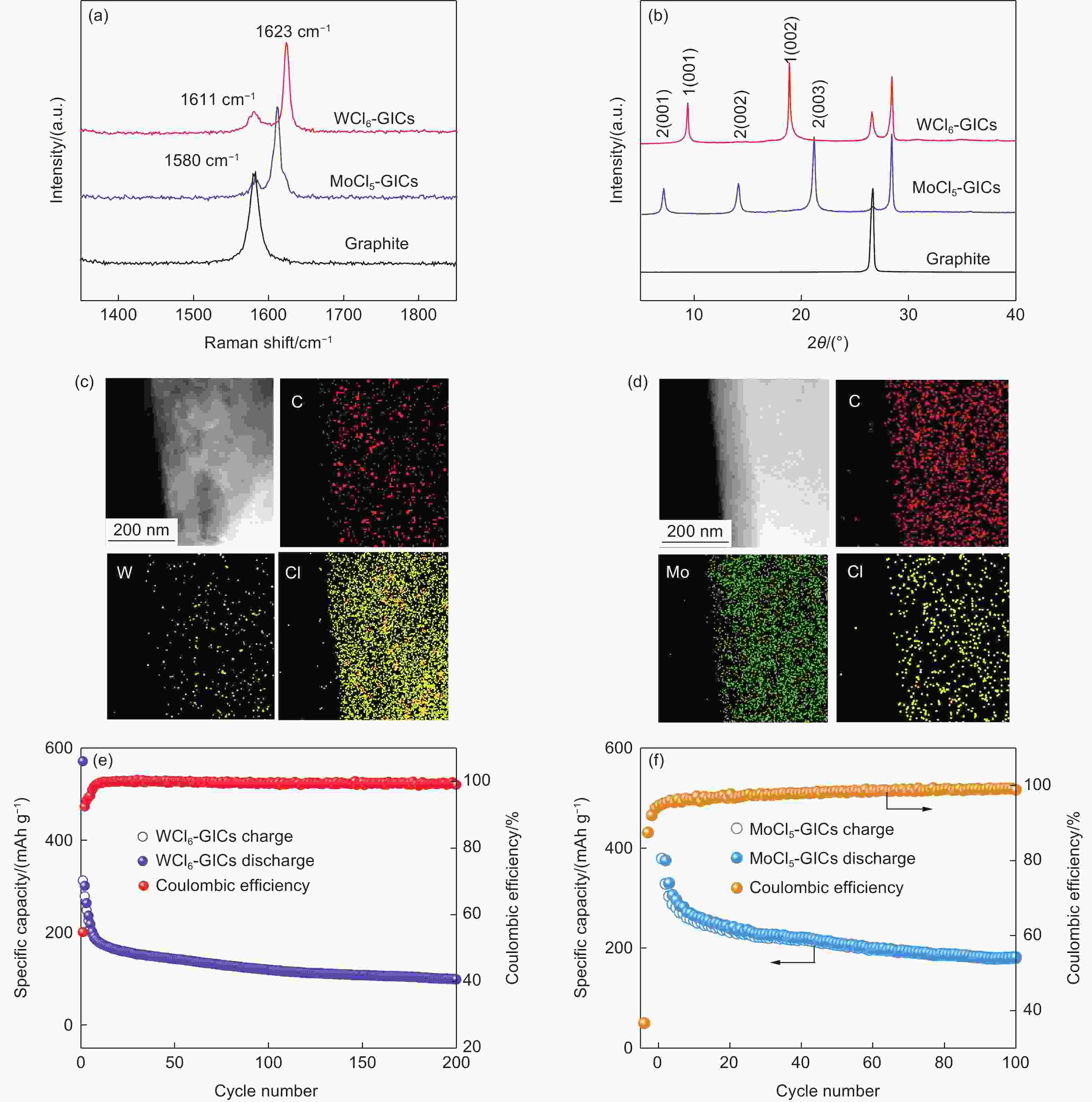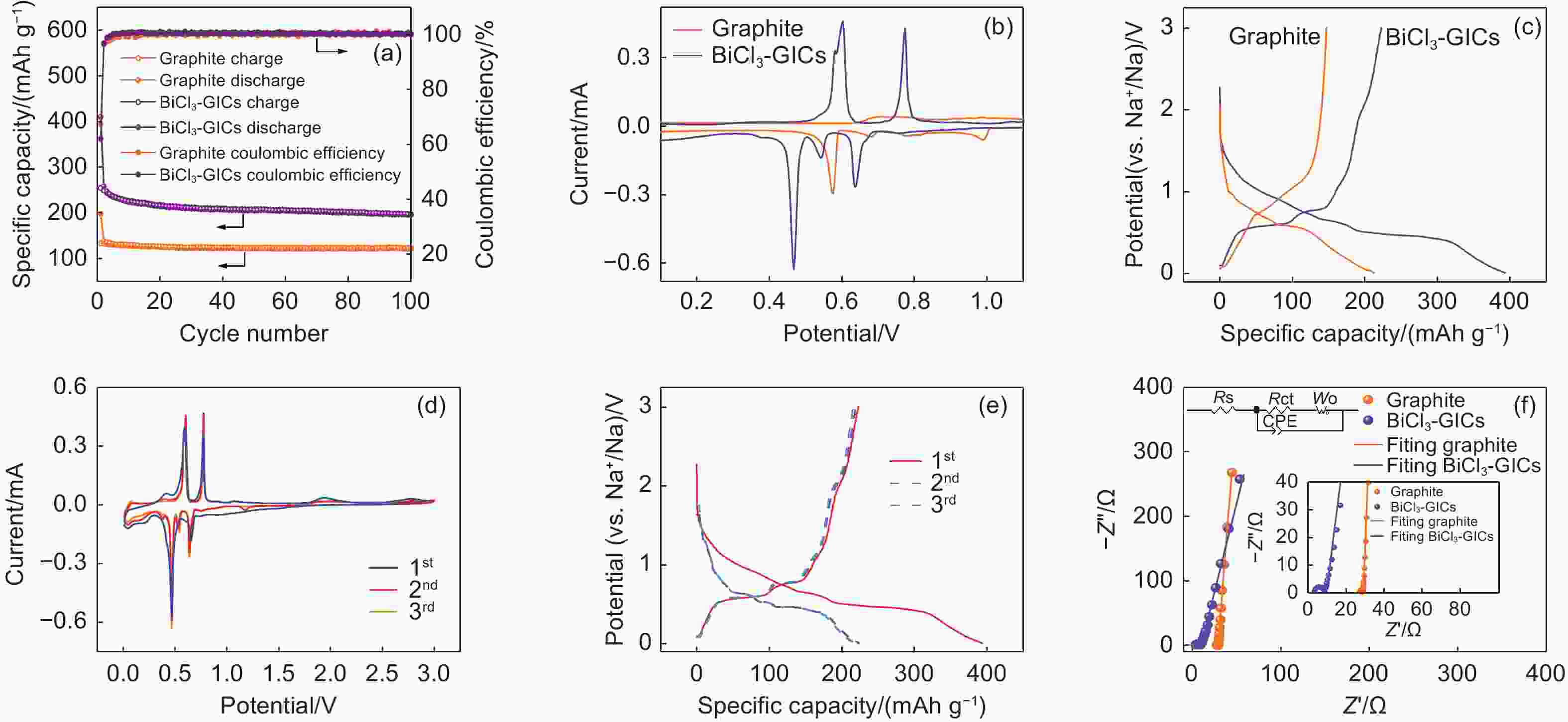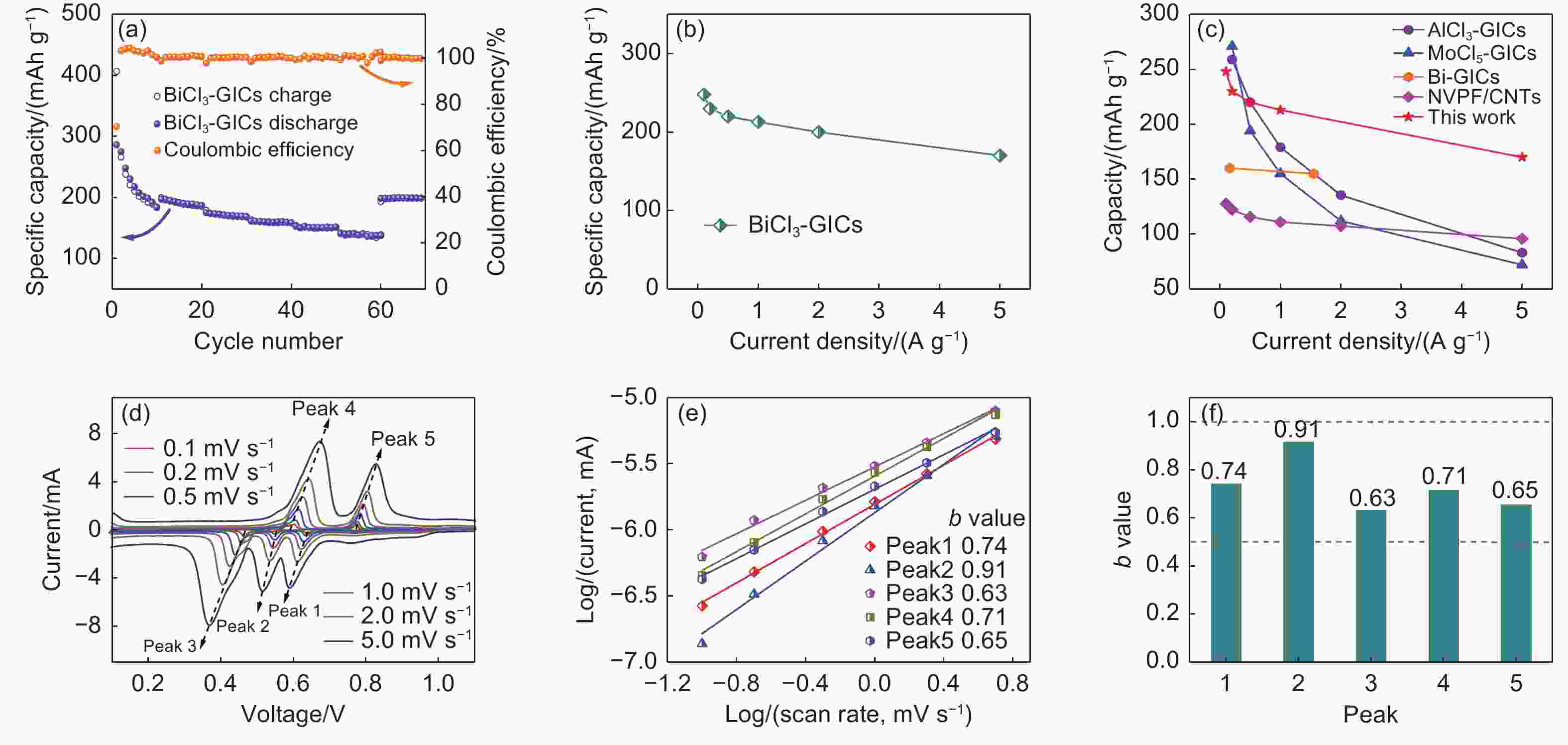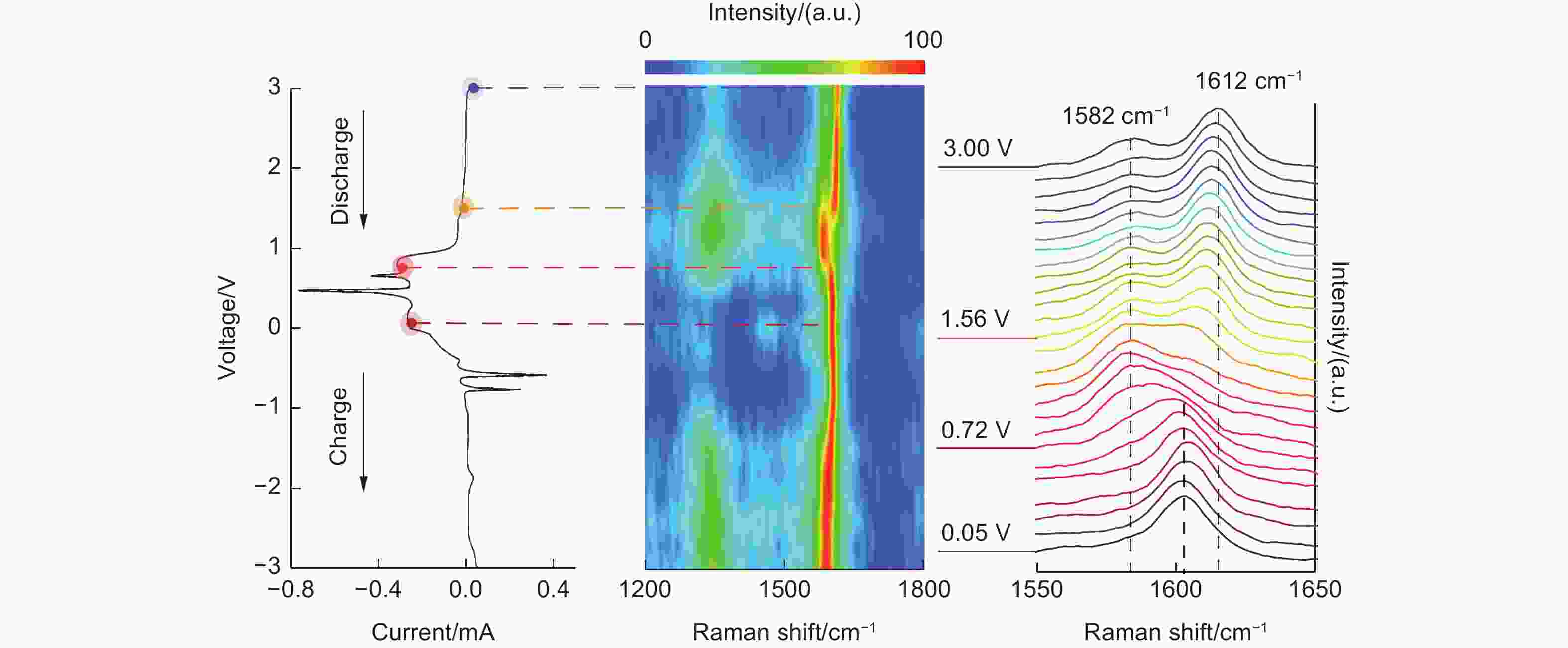Sulfonyl chloride-intensified metal chloride intercalation towards graphite for efficient sodium storage
-
摘要: 金属氯化物-石墨插层化合物具有导电性优异,石墨层间距大等特点,可用作钠离子电池负极材料。然而,在传统金属氯化物插层石墨过程中,不可避免的用到氯气,既增加了实验操作的风险,也对实验设备提出更高要求。基于上述原因,本文创新性地使用SO2Cl2作为氯源来促进BiCl3插层石墨。该方法不仅有效提高了BiCl3插层效率,也避免了直接使用氯气带来的安全性风险。采用该方法所合成的三氯化铋-石墨插层化合物(BiCl3-GICs)的层间距为1.26 nm,BiCl3插层含量高达42%。以其为负极材料,组装的钠离子电池具有高的比容量(213 mAh g−1 at 1 A g−1)和优异的倍率性能(170 mAh g−1 at 5 A g−1)。此外,原位拉曼光谱表明,首圈放电后石墨与插层的BiCl3相互作用减弱,该过程有效促进了钠离子在石墨层内的存储。采用该方法可成功制备多种类型金属氯化物-石墨插层化合物,为开发高性能储能材料提供了可行思路。
-
关键词:
- 磺酰氯 /
- 金属氯化物-石墨插层化合物 /
- 插层强化过程 /
- 负极材料 /
- 钠离子电池
Abstract: Metal chloride-intercalated graphite with excellent conductivity and large interlayer spacing is highly desired for applications in sodium ion batteries. However, halogen vapor is usually indispensable in initiating the intercalation process, which makes equipment design and experiments challenging. In this work, SO2Cl2 was innovatively used as chlorine generator to intensify the intercalation process of BiCl3 into graphite (BiCl3-GICs), which avoided potential risks such as Cl2 leakage in traditional methods. Additionally, the operational efficiency in experiment is effectively improved. After reacting SO2Cl2, BiCl3, and graphite at 200 °C for 20 h, the as-synthesized BiCl3-GICs delivered a large interlayer spacing (1.26 nm) and a high amount of BiCl3 intercalation (42%), which endows SIBs with high specific capacity of 213 mAh g−1 at 1 A g−1 and fantastic rate performance (170 mAh g−1 at 5 A g−1). Moreover, the in-situ Raman spectra revealed that electronic interaction between graphite and intercalated BiCl3 is weakened during the first discharge, which is favorable for the sodium storage. This work broadly enables the intercalation intensification process of other metal chloride-intercalated graphite, offering possibilities for developing advanced energy storage devices. -
Figure 2. (a) XRD patterns and (b) TGA curves of the BiCl3-GICs samples fabricated at various temperatures (reaction time: 10 h). (c) XRD patterns and (d) TGA curves of the BiCl3-GICs samples prepared at various reaction time (reaction temperature: 200 °C). (e) Raman spectra, and (f) FT-IR spectra of graphite and the BiCl3-GICs
Figure 7. (a-b) Rate performance of BiCl3-GICs. (c) Comparison of rate performance between this work and the reported SIB anodes. (d) CV curves of BiCl3-GICs at various scan rates. (e) The calculated logarithm connection between scan rate and current based on the CV curves. (f) b-values of different redox peaks
-
[1] Li Y, Zhou Q, Weng S, et al. Interfacial engineering to achieve an energy density of over 200 Wh kg−1 in sodium batteries[J]. Nature Energy,2022,7(6):511-519. doi: 10.1038/s41560-022-01033-6 [2] Tang Z, Zhang R, Wang H, et al. Revealing the closed pore formation of waste wood-derived hard carbon for advanced sodium-ion battery[J]. Nature Communications,2023,14(1):6024. doi: 10.1038/s41467-023-39637-5 [3] Yu J, Ren W, Yu C, et al. Enhanced anion-derived inorganic-dominated solid electrolyte interphases for high-rate and stable sodium storage[J]. Energy & Environmental Materials,2023,6(4):e12602. [4] Li S, Qian G, He X, et al. Thermal-healing of lattice defects for high-energy single-crystalline battery cathodes[J]. Nature Communications,2022,13(1):704. [5] Yang F, Gao H, Chen J, et al. Phosphorus-based materials as the anode for sodium-ion batteries[J]. Small Methods,2017,1(11):1700216. [6] Fang S, Bresser D, Passerini S. Transition metal oxide anodes for electrochemical energy storage in lithium- and sodium-ion batteries[J]. Advanced Energy Materials,2020,10(1):1902485. [7] Guo H, Li Y, Wang C, et al. Effect of the air oxidation stabilization of pitch on the microstructure and sodium storage of hard carbons[J]. New Carbon Materials,2021,36(6):1073-1078. doi: 10.1016/S1872-5805(21)60075-6 [8] Huang S, Qiu X, Wang C, et al. Biomass-derived carbon anodes for sodium-ion batteries[J]. New Carbon Materials,2023,38(1):40-66. [9] Hou Z, Gao Y, Zhang Y, et al. Research progress on freestanding carbon-based anodes for sodium energy storage[J]. New Carbon Materials,2023,38(2):230-243. doi: 10.1016/S1872-5805(23)60725-5 [10] Li X, Wang X, Sun J. Recent progress in the carbon-based frameworks for high specific capacity anodes/cathode in lithium/sodium ion batteries[J]. New Carbon Materials,2021,36(1):106-116. [11] Wang Z, Yu C, Huang H, et al. Carbon-enabled microwave chemistry: from interaction mechanisms to nanomaterial manufacturing[J]. Nano Energy,2021,85:106027. [12] Wang Z, Yu C, Zhao C, et al. Interface inversion: a promising strategy to configure ultrafine nanoparticles over graphene for fast sodium storage[J]. Small,2021,17(1):2005119. [13] Xiao J, Han J, Zhang C, et al. Dimensionality, function and performance of carbon materials in energy storage devices[J]. Advanced Energy Materials,2022,12(4):2100775. [14] Zhao C, Yu C, Qiu B, et al. Ultrahigh rate and long-life sodium-ion batteries enabled by engineered surface and near-surface reactions[J]. Advanced Materials,2018,30(7):1702486. [15] Zhao C, Yu C, Zhang M, et al. Ultrafine MoO2-carbon microstructures enable ultralong-life power-type sodium ion storage by enhanced pseudocapacitance[J]. Advanced Energy Materials,2017,7(15):1602880. [16] Li X, Li J, Ma L, et al. Graphite anode for potassium ion batteries: current status and perspective[J]. Energy & Environmental Materials,2022,5(2):458-469. [17] Xu Z, Yoon G, Park K, et al. Tailoring sodium intercalation in graphite for high energy and power sodium ion batteries[J]. Nature Communications,2019,10(1):2598. [18] Huang S, Qiu X, Wang C, et al. Biomass-derived carbon anodes for sodium-ion batteries[J]. New Carbon Materials,2023,38(1):40-66. [19] Wang Z, Yu C, Huang H, et al. Energy accumulation enabling fast synthesis of intercalated graphite and operando decoupling for lithium storage[J]. Advanced Functional Materials,2021,31(15):2009801. [20] Wang F, Yi J, Wang Y, et al. Graphite intercalation compounds (GICs): A new type of promising anode material for lithium-ion batteries[J]. Advanced Energy Materials,2014,4(2):1300600. [21] Li Z, Zhang C, Han F, et al. Towards high-volumetric performance of Na/Li-ion batteries: A better anode material with molybdenum pentachloride-graphite intercalation compounds (MoCl5-GICs)[J]. Journal of Materials Chemistry A,2020,8(5):2430-2438. [22] Li Z, Tian Z, Zhang C, et al. An AlCl3 coordinating interlayer spacing in microcrystalline graphite facilitates ultra-stable and high-performance sodium storage[J]. Nanoscale,2021,13(23):10468-10477. [23] Dresselhaus M S, Dresselhaus G. Intercalation compounds of graphite[J]. Advances in physics,2002,51(1):1-186. [24] Metz W, Shamsrizi M. Investigations of the nucleation process of metal chloride-graphite intercalation compounds[J]. Synthetic Metals,1989(34):85-89. [25] Stumpp E, Niess R. Graphit einlagerungsverbindungen mit thallium(III) chlorid[J]. Carbon,1978,16(4):259-264. [26] Wang Q, Hui J, Huang Y, et al. The preparation of BiOCl photocatalyst and its performance of photodegradation on dyes[J]. Materials Science in Semiconductor Processing,2014,17:87-93. [27] Seiler S, Halbig C E, Grote F, et al. Effect of friction on oxidative graphite intercalation and high-quality graphene formation[J]. Nature Communications,2018,9(1):836. [28] Xie Z, Zhu Z, Liu Z, et al. Rechargeable hydrogen-chlorine battery operates in a wide temperature range[J]. Journal of the American Chemical Society,2023,145(46):25422-25430. [29] Cao R, Zhang M, Jiao Y, et al. Co-upcycling of polyvinyl chloride and polyesters[J]. Nature Sustainability,2023,6(12):1685-1692. [30] Li T, Li M, Li H, et al. High-voltage and long-lasting aqueous chlorine-ion battery by virtue of “water-in-salt” electrolyte[J]. iScience,2021,24(1):101976. [31] Shi L, Si W, Wang F, et al. Construction of 2D/2D layered g-C3N4/Bi12O17Cl2 hybrid material with matched energy band structure and its improved photocatalytic performance[J]. RSC Advances,2018,8(43):24500-24508. [32] Raccichini R, Varzi A, Wei D, et al. Critical insight into the relentless progression toward graphene and graphene-containing materials for lithium-ion battery anodes[J]. Advanced Materials,2017,29(11):1603421. [33] Jache B, Adelhelm P. Use of graphite as a highly reversible electrode with superior cycle life for sodium-ion batteries by making use of co-intercalation phenomena[J]. Angewandte Chemie International Edition,2014,53(38):10169-10173. [34] Chen J, Fan X, Ji X, et al. Intercalation of Bi nanoparticles into graphite results in an ultra-fast and ultra-stable anode material for sodium-ion batteries[J]. Energy & Environmental Science,2018,11(5):1218-1225. [35] Wang C, Wang L, Li F, et al. Bulk bismuth as a high-capacity and ultralong cycle-life anode for sodium-ion batteries by coupling with glyme-based electrolytes[J]. Advanced Materials,2017,29(35):1702212. [36] Lei L, Sun K, Hongwei Z, et al. Large scale preparation of Na3V2(PO4)2F3 with cross-linked double carbon network for high energy density sodium ion batteries at −20 °C[J]. Journal of Energy Storage,2024,78:109923. [37] Dong X, Chen L, Liu J, et al. Environmentally-friendly aqueous Li (or Na)-ion battery with fast electrode kinetics and super-long life[J]. Science Advances,2016,2(1):e1501038. [38] Wang J, Song X, Yu C, et al. A ferricyanide anion-philic interface induced by boron species within carbon ramework for efficient charge storage in supercapacitors[J]. ACS Applied Materials & Interfaces,2024,16(10):12916-12923. [39] Zhao W, Tan P H, Liu J, et al. Intercalation of few-layer graphite flakes with FeCl3: Raman determination of fermi level, layer by layer decoupling, and stability[J]. Journal of the American Chemical Society,2011,133(15):5941-5946. -





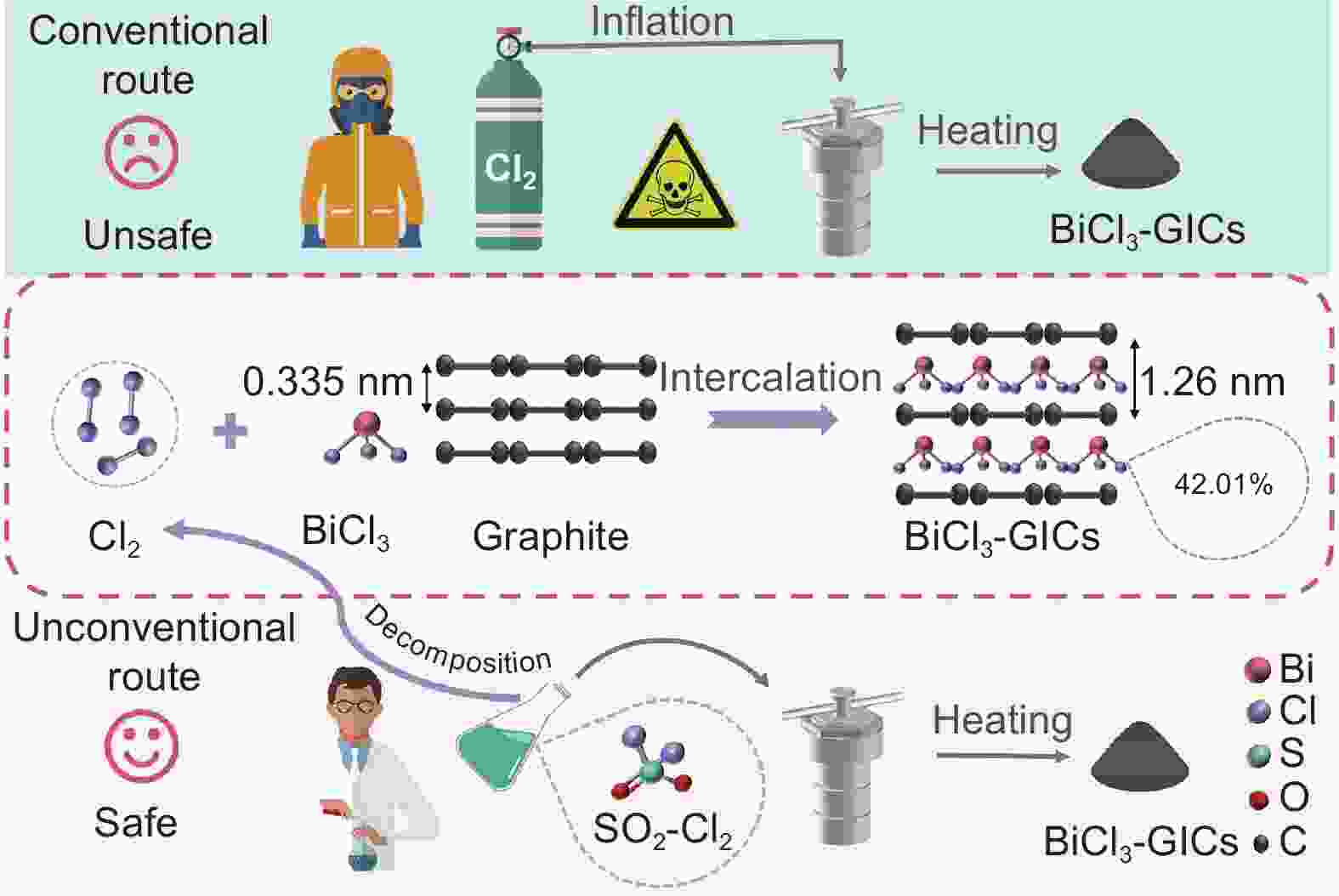
 下载:
下载:
